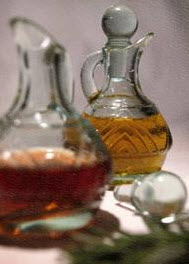 Now that you are bringing home the best food possible, how can you make sure you’re getting the most nutrients from that food?
Now that you are bringing home the best food possible, how can you make sure you’re getting the most nutrients from that food?
As we learned in the fruit and vegetable series, the nutrient value of today’s food is dramatically diminished. Remember the reference to peaches: In 1951, two peaches would supply a woman’s Recommended Dietary Allowance of vitamin A, but today she’d need to eat 53 to get the same nutrients?
So with reduced nutrient value, it’s more important than ever to ensure that you get all the nutrients you can out of the food you cook–and that you avoid adding carcinogens or chemicals or altering the food profile with your cooking method.
Next I’m going to discuss some of the best ways to prepare food infused with nutrients.
The Best Cooking Methods
Stir-frying is a great way to eat perfectly balanced meals because you can cook protein, carbohydrates (vegetables) and healthy fats (coconut oil or rice bran oil) in one pan. Using a wok over medium heat and continuously stirring the food allows it to cook while remaining crisp and maintaining nutrient value.
If you use traditional vegetable oils, it’s important not to let the heat get too high or the oil will oxidize and turn rancid. (If it discolors or imparts a smoky flavor, you’ve definitely gone too far). I rarely if ever turn my stove dials above three (on a 1-10 scale). Rice bran oil can handle higher heat and is the best bet for stir frying. You can also use chicken or vegetable broth instead of oil.
Sautéing as it is traditionally done over high heat, is not usually a good choice because the oil is likely to oxidize. But now what was once called pan-frying is being called sautéing, and it is a good way to prepare foods as long as the heat stays low and the oils are healthy ones. To me, it doesn’t matter whether you adhere to traditional naming conventions: With my stove dial on three, and using coconut oil, rice bran oil, butter, or broth, cooking vegetables and/or meats in a skillet is a good alternative to using a wok and probably my most typical cooking method.
Steaming vegetables in a small amount of water in a covered pot (using a basket or colander) is one of the best ways to keep nutrients in your vegetables. Just be careful not to overcook: Vegetables should be brightly colored and slightly crunchy when they are done, not soggy and limp. Try adding your favorite spice to the water for extra flavor!
Poaching isn’t just for eggs: It’s also a way to cook fish, chicken and delicate foods that would not survive a boil. While better than boiling, there is still some nutrient loss to the water.
Boiling tends to drain a lot of nutrients, but for some hearty vegetables like potatoes and root vegetables, it makes sense on occasion. It definitely makes sense if you are making soup and are keeping all the nutrients in the broth! Otherwise, try to avoid boiling. If you do boil, try to use the nutrient-rich water in your soup broth, sauce or rice or quinoa.
Pressure-cooking has been revived lately but remains an uncommon means of cooking in the U.S. But because pressure-cooking cooks foods very quickly, it tends to preserve a lot of nutrients and flavor, unlike slow cookers, which result in greater nutrient loss. I don’t use my pressure cooker often, but it does create tender succulent fall-off-the-bone meat dishes that convince even the most loyal grilling fans that there is another option.
Baking is not just for pies and cookies; it can be a good way to mix meats and vegetables into a simple meal. Roasting meat and veggies in a pan can also a make a hearty meal. It’s not something I like to do in the summer months, but in the winter, baked/roasted meals are comforting in taste, texture and smell.
And for vegetables, I’d be remiss if I didn’t mention that one of the best ways to serve them is raw. You can drizzle some olive oil and himalyan salt on them or create sauces from organic ingredients you have on hand. While my kids love broccoli sautéed in a little oil, they also adore it raw and crunchy. I often set out a raw veggie platter while I am cooking only to find it completely devoured before we sit down at the table. And that’s OK with me!
Cooking Methods to Avoid
Frying and deep-frying probably don’t need much of an explanation for why they are unhealthy. In addition to the excess calories and fat, frying at high heats causes oils to oxidize and turn rancid. This causes inflammation, which can result in myriad problems, including high cholesterol, arterial plaque leading to heart disease, and can produce cancer-causing chemicals. If you do cook on high heat be sure to cook with an oil such as rice bran oil that can withstand higher temperatures before it oxidizes.
Microwaving is a controversial cooking method and one that I’m going to discuss more fully another time. But research shows that microwaving alters the chemical composition of food and affects the nutrient value. Microwaving poses health concerns that I believe will be proven in time, but for now, perhaps knowing that microwaved broccoli results loses up to 97% of its beneficial antioxidant chemicals, while steamed broccoli loses fewer than 11%, may help you think twice about it.
If you must microwave, never use plastic containers, as they have been shown to leach toxic chemicals like Bisphenol A into your food: always use glass or ceramics. (Some ceramics say microwave safe but they are not. One way to test microwave safety is to fill the container with cold water and heat it on high power for one minute. If the water gets warmer but the container remains cool, it’s ok to use. If the container becomes warm, don’t use it.)
Grilling is a great American tradition and I know I’m not going to make friends when I say that you should minimize grilling to the extent possible. While gas is a better fuel than charcoal, and electric is best, anytime you generate a black char line on your food, you are creating carcinogens, or cancer-causing substances, in your food.
And even if you don’t char your meat, fat in the meat causes gases to be released when it drips onto the heat source, which pose additional cancer concerns. For that reason, avoid grilling meat. Grilling vegetables and fish without char lines is OK — use foil or a basket and grill away.
As with everything, balance is key. If you do it on occasion, and live a healthy lifestyle, occasional char-grilled meat isn’t likely to cause you much trouble. Nor will using a microwave in a pinch. But if you do it regularly, and/or you have other health issues to address, then minimizing such cooking methods could be a big step forward to improving your wellness.
And one final note: if you are still using non-stick cookware, consider investing in a new set of pans. Numerous studies have shown that the chemicals that create the non-stick pan linings are toxic and leach into the food over time. Ceramic cast iron pans are a great choice as is stainless steel.
To your wellness and health: your true wealth!
Inger
Author: Inger Pols is the Editor of the New England Health Advisory and Author/Creator, Finally Make It Happen, the proven process to get what you want. Get a free special report on The Truth About Sugar: It’s Not All Equal at www.IngerPols.com
Photo Source: Microsoft Clip Art

 In a previous article
In a previous article
 Follow me on Twitter
Follow me on Twitter 